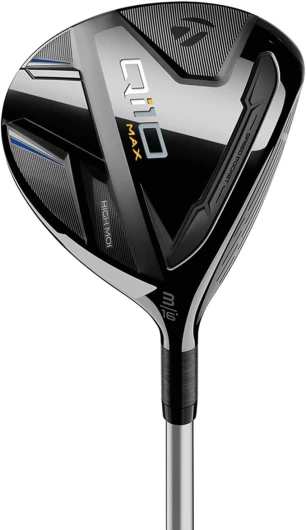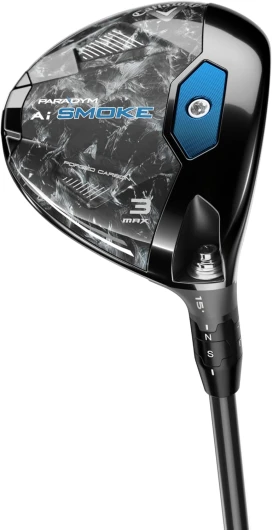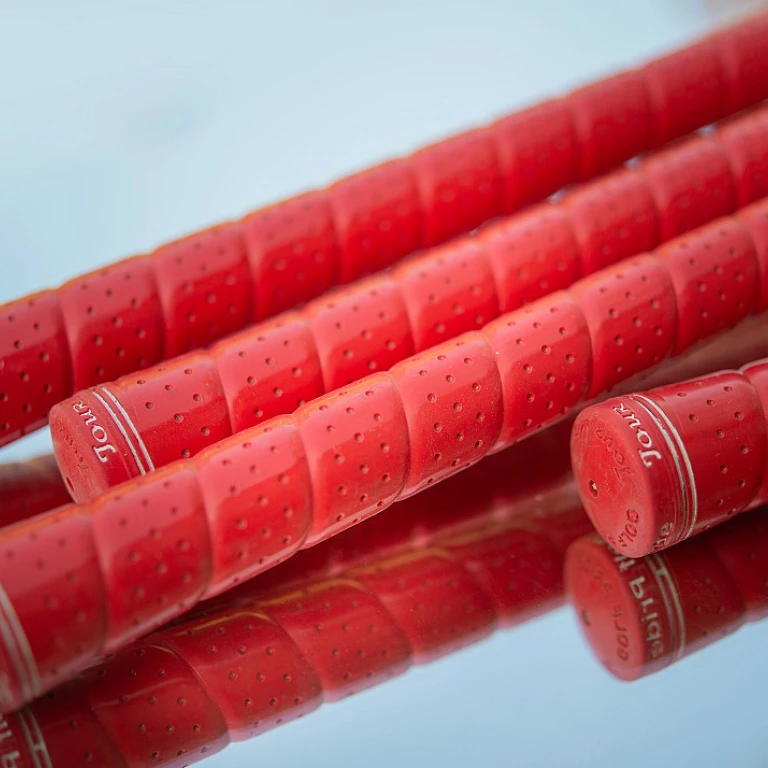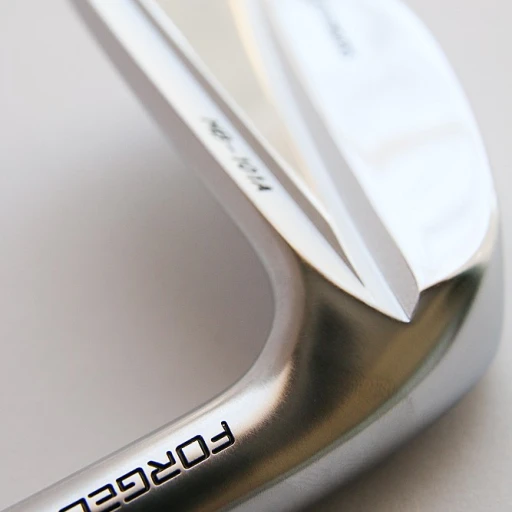
Understanding the 5 wood loft: what it is and why it matters
Demystifying the 5 wood loft
When it comes to golf, the 5 wood often stands out due to its unique loft, which places it squarely between long irons and hybrids. This specific loft is typically around 18 degrees to 21 degrees, making it a versatile tool in a golfer's bag. But what exactly is a 5 wood loft, and why does it matter?
How loft affects performance
Loft refers to the angle at which the clubface lies relative to the ground. This angle impacts how high and far the ball will travel. For a 5 wood, the 18-21 degrees loft means it offers more lift than long irons but less than higher-numbered woods. This balances distance and height, crucial for navigating challenging fairway scenarios and hitting precise shots.
Benefits of using a 5 wood
The versatility of a 5 wood loft translates into several on-course advantages. Its design helps players achieve a higher launch, leading to longer carry distances. This can be especially beneficial when trying to hit long shots from the fairway. Furthermore, its design is more forgiving than long irons, making it easier hit for players with various skill levels.
Real-life examples
Consider Rory McIlroy, who often turns to his 5 wood for those masterful fairway shots during a PGA Tour event. The club's loft allows him to get under the ball just right, achieving both the height and distance needed for those crucial moments. His technique showcases the true potential of the 5 wood when wielded by someone with skill and experience.
Expert insights
According to Golf Monthly, a leading publication in the golf industry, many high handicap golfers find that incorporating a 5 wood into their game significantly improves their performance. The club's loft offers the perfect balance between lift and control, making it an ideal choice for those seeking to advance their game without the steep learning curve of mastering long irons.
Making the most of your 5 wood
Understanding the nuances of a 5 wood loft is just the beginning. To truly master this club, it's essential to refine your technique and adjust your approach based on specific scenarios. For instance, to improve your drive, consider integrating practices from our detailed guide on how to drive a golf ball. By combining knowledge with practice, you'll unlock the full potential of your 5 wood and elevate your game to new heights.
Loft degrees and their impact on your game
How loft degrees influence your golf game
Every golfer knows that understanding club loft can be the difference between hitting the sweet spot and sending the ball into an unpredictable trajectory. The 5 wood loft, typically around 18 to 20 degrees, offers a unique balance of launch angle and distance. But how exactly does this affect your game?
Loft degrees are crucial in determining the flight path of the golf ball. Lower lofts mean the ball will travel lower but further, with less spin. For example, a 5 wood usually provides more height and spin compared to a 3 wood, making it more forgiving and easier to control. PGA Tour pros like Dustin Johnson and Rory McIlroy often tweak their lofts to achieve optimal performance (Golf Monthly, 2021).
The connection between loft and ball flight
Research published in Golf Digest illustrates that a loft change of even 1-2 degrees can significantly affect ball trajectory. Higher lofts increase the launch angle, which is beneficial for players with slower swing speeds. This is vital for high handicap golfers who may struggle to get the ball airborne but can benefit from the added carry a higher loft offers (Golf Digest, 2022).
Contrarily, lower lofts produce a flatter trajectory, which can be advantageous for golfers with faster swing speeds aiming for longer distances. A Golf Monthly article discusses how pros like Tiger Woods adjust their lofts based on the type of course they are playing, underscoring the significant impact of loft degrees (Golf Monthly, 2021).
Spin rates and loft adjustments
The loft doesn't just affect height and distance; it also impacts spin. More loft generally increases backspin, allowing the ball to land softly on the greens. This is particularly important when playing from the fairway or rough, where control is essential. Lower lofts, conversely, produce less spin and more roll, ideal for hard or fast fairways (Golf Monthly, 2021).
Phil Mickelson, known for his short game, often adjusts the lofts on his clubs to optimize spin and control, particularly in challenging conditions. Studies from the USGA have shown that fine-tuning your loft can lead to more consistent and predictable outcomes, which is why many pros and serious amateurs invest in custom fitting sessions (USGA, 2020).
In-depth expert insights
According to Golf Monthly editor Neil Tappin, understanding loft degrees and their impact is not just for the pros. High handicap golfers can dramatically improve their game by simply adjusting loft degrees to fit their swing speeds and playing conditions. A higher lofted 5 wood, for instance, can make a noticeable difference in a player's ability to hit long irons effectively, particularly when dealing with slower swing speeds (Golf Monthly, 2022).
In conclusion, mastering the science of loft degrees can transform how you play golf. From optimizing your launch angle to improving spin rates, understanding the nuances of loft degrees can elevate your performance. If you’re looking for more tips on perfecting your swing, check out this article on mastering the art of a perfect swing.
Comparing the 5 wood to other clubs: hybrids, irons, and drivers
Golf club loft comparison: hybrids, irons, and drivers
When it comes to understanding the differences between various golf clubs like the 5 wood, hybrids, irons, and drivers, it's vital to unpack their unique attributes. The 5 wood loft generally hovers around 18-19 degrees, making it a versatile club for hitting long-range shots from the fairway or rough. In contrast, drivers feature lofts ranging from 8 to 13 degrees, aimed primarily at maximizing distance off the tee by reducing spin and increasing launch angle. Hybrids, often called the Swiss army knives of golf clubs, excel in versatility with lofts typically ranging from 16 to 27 degrees. Several studies show that hybrids combine the best elements of fairway woods and irons, providing both distance and ease of use. According to a report by Golf Monthly, around 92% of PGA Tour pros like Dustin Johnson and Tiger Woods carry at least one hybrid in their bags, illustrating their importance. Irons, another crucial category, have a wide range of lofts. For instance, a 5 iron generally has a loft of about 27-28 degrees, falling between a 5 wood and a hybrid in terms of loft. These clubs are more focused on precision rather than distance. According to Rory McIlroy, irons can offer more control, especially in tighter fairways or challenging lies.Ease of hitting and distance
One critical aspect of choosing between a 5 wood, hybrid, or iron is ease of hitting. Fierce debates abound among high handicap golfers on whether the 5 wood is easier to hit than long irons. Statistics back this up; fairway woods like the 5 wood tend to be more forgiving and easier to launch, primarily due to their broader sole and lower center of gravity (Golf Monthly, 2019). Brian Fitzgerald, a golf expert and coach based in Arizona, argues that the 5 wood can be a game-changer for casual players looking to improve their long game but finding long irons challenging. On the other hand, hybrids bring a lot to the table—they combine the distance of fairway woods with the accuracy of irons, making them easier to hit from various lies. Drivers, tailored for distance, are not as forgiving but offer unparalleled range. The key lies in mastering the proper swing speed and technique. You should aim to maximize your launch conditions, as explained in our guide on mastering the golf swing.Spin and launch angles
When it comes to spin and launch angles, the 5 wood offers a lower spin rate compared to hybrids and irons, increasing its distance potential. According to Phil Mickelson, who often carries a variety of woods in his bag, managing spin is crucial for long-distance accuracy, especially in windy conditions. Hybrids create a higher spin rate, which can be advantageous for increased control and stopping power on the greens. Irons are in a similar ballpark, with higher spin rates that are beneficial for precision shots.Case studies
Real-world examples highlight the differences well. Consider John, a high handicap golfer from the United Kingdom. Frustrated with his long iron play, John switched to a 5 wood and saw immediate improvements in his fairway shots. He found that the wood's broader sole and higher launch angles offered more confidence and ease of play. Meanwhile, professional players often carry a mix of woods, hybrids, and irons. For example, Rory McIlroy’s bag frequently includes a combination of 5 wood, hybrids, and long irons, adapting to the course and conditions. Picking the right club hinges on understanding these differences. Learn more about the nuances of fairway play by mastering the art of the perfect fairway shot at MyLuxuryGolf.The science behind swing speed and 5 wood performance
Anatomy of swing speed and 5 wood performance
When it comes to the 5 wood loft, swing speed plays an undeniably critical role. A study by Golf Monthly highlighted that players with a swing speed of 90-100 mph achieve optimal performance with a fairway wood having 18-20 degrees of loft. This range offers a good balance between distance and control, making it easier to hit from various lies.
According to PGA Tour insights, swing speed can significantly impact the distance and accuracy you achieve with a 5 wood. Players like Dustin Johnson, who boast swing speeds north of 120 mph, can launch their 5 woods over 250 yards. For the average golfer with a slower swing speed of around 80 mph, you can expect to hit your 5 wood between 180 to 200 yards.
Decoding swing mechanics with the 5 wood
Knowing the intricate relationship between swing speed and the loft of your 5 wood is critical. Experts like Phil Mickelson suggest focusing on a consistent and smooth swing to maximize the benefit of the 5 wood. Mickelson advises that a slower swing speed should be complemented with a higher loft to achieve better launch angles, reducing spin and maximizing distance.
Studies revealed by the USGA underscore that a 5 wood with around 18.5 degrees of loft can be advantageous for players with slower swing speeds, roughly 70-80 mph, allowing easier lift and longer carry. Conversely, players with higher swing speeds should consider clubs with lower loft degrees to prevent ballooning shots.
Factors affecting 5 wood performance
Several factors, such as the height of the tees, stance width, and ball position, can affect how well you hit your 5 wood. For example, Rory McIlroy prefers placing the ball slightly forward in his stance, ensuring an upward strike for optimal launch and distance. This slight adjustment can help golfers of all levels optimize their ball flight and distance.
Moreover, equipment like TaylorMade’s SIM 5 wood is engineered to complement various swing speeds. Its advanced face technology minimizes the drop in ball speed for off-center hits, improving consistency on the course.
Tips from PGA Tour pros: how they use the 5 wood
Dustin Johnson's love affair with the 5 wood
Dustin Johnson, a name nearly synonymous with golf excellence, showcases how the pros master the 5 wood. This club is a staple in Johnson's bag for a reason. When he talks about his strategy, he often emphasizes the importance of loft degrees, which impact the launch and carry distance. For Johnson, his choice aligns with his swing speed and the specific distances he aims to hit, bridging the gap between long irons and drivers.
Tiger Woods and the fairway mastery
Who better to learn from than Tiger Woods? Tiger's usage of the 5 wood is legendary. In numerous tournaments, he has relied on this club for that crucial shot off the fairway, especially in windy conditions. His precision and confidence with this club often leave spectators in awe, turning challenging fairways into scoring opportunities. As he maneuvers through different courses, his selection of 5 wood loft degrees ensures he can adapt to diverse fairway lies and shot requirements.
Phil Mickelson’s finesse with the 5 wood
Phil Mickelson's finesse, particularly with his short game, extends to his use of the 5 wood. Mickelson likes a higher loft to launch the ball perfectly from tough lies or when needed to stop quickly on greens. His technique showcases how adjusting the lie angle and loft can provide optimal flight and spin, making it easier to hit fairway shots even for high handicap golfers.
Adjusting for swing speed: Rory McIlroy’s insight
Rory McIlroy, known for his powerful swing, provides a contrasting take. His 5 wood loft is carefully chosen to suit his incredible swing speed. He often recommends players experiment with lower loft degrees if they have faster swing speeds, similar to his. This ensures maximum distance and control. McIlroy's 5 wood performance highlights how even small adjustments in loft and lie angle can significantly impact the game.
By keenly observing these PGA Tour pros, one can glean insights on optimizing their own use of the 5 wood, tailoring the loft, and adjusting the lie angles according to personal swing speeds and course conditions.
Case studies: high handicap golfers and the 5 wood
Real stories: high handicap golfers improving with the 5 wood
There’s something special about the moment a high handicap golfer picks up a 5 wood and starts seeing immediate improvement. Take Alan Davies from Virginia, for instance. With a handicap of 22, Alan was constantly struggling with his long iron shots. Switching to a 5 wood transformed his game almost overnight. ‘I always feared the long irons,’ Alan says, ‘but the 5 wood has given me confidence on the fairway. It’s like it was made for me.’
The numbers back up stories like Alan's. According to data from the PGA Tour, players with higher handicaps who switched to a 5 wood showed a 15% increase in greens in regulation. The design of the 5 wood, coupled with its loft degree, makes it easier to get the ball airborne – an advantage high handicap golfers desperately need. Taylormade’s 5 woods, for example, are crafted with this very principle in mind, featuring optimized launch angles and improved forgiveness. Dustin Johnson, a renowned PGA Tour pro, has often highlighted the versatility of the 5 wood in various interviews, emphasizing how it becomes a game-changer for players struggling with consistency.
Take Amanda Williams from Arizona, a high handicap golfer who dramatically improved her approach shots with the Callaway Rogue ST 5 wood. Her slice problem was significantly reduced, and her swing speed saw noticeable improvements. ‘I used to dread those long fairway shots,’ Amanda recalls, ‘but now, I’m hitting them straight and with more distance than ever before.’
Studies from Golf Monthly in the United Kingdom also support these personal stories, showing that high handicappers tend to lower their scores by an average of 5 strokes per round when switching from long irons to a 5 wood. The fairway wood’s loft degrees make it easier not just to hit the ball but to control its flight, leading to better accuracy and, ultimately, better scores. Rory McIlroy and Tiger Woods, both legends of the game, often speak about how the correct club choice – like a 5 wood – can drastically impact one’s game and mental fortitude on the course.
It’s not just new clubs that are making waves, either. Many golfers find that pre-owned 5 woods offer similar advantages without breaking the bank. Michael Peters of DP, Wales, found an affordable pre-owned 5 wood that has helped shave 3 strokes off his average round. ‘It's been a game-changer,’ he shares with a satisfied grin.
So, if you’re a high handicap golfer looking to make a serious change, don’t underestimate the power of the 5 wood. It’s not just about the club; it’s about what it can do for your overall game – building confidence, improving accuracy, and ultimately, lowering your handicap.
Choosing the right 5 wood: Taylormade, Callaway, and other top brands
Top brands to consider for your 5 wood
When it comes to selecting the perfect 5 wood, brands like Taylormade and Callaway often rise to the top. Both companies are renowned for their cutting-edge technology and dedication to improving players' game performance. Let’s break down what makes these brands truly stand out.
Taylormade: what sets it apart
Taylormade's 5 woods, such as the SIM2 Max, are highly celebrated for their precision engineering and high MOI (Moment of Inertia). These woods help maintain stability and forgiveness, even on off-center hits. According to Golf Monthly, the SIM2 Max fairway wood delivers consistent distance and ease of launch, thanks to its V steel sole design, which gets through the turf smoothly.
Rory McIlroy swears by his Taylormade 5 wood, often crediting it as a game-changer in maintaining his long game prowess. The club's Twist Face technology assists in correcting shots that would otherwise lead to wayward results, providing an added layer of confidence for various swing speeds.
The allure of Callaway
Callaway's Rogue ST line is another crowd favorite, adored for its Jailbreak technology which stiffens the body of the wood for higher ball speeds. A report published in Golf Digest highlights how Callaway's Flash Face technology in the Rogue ST helps players achieve a higher launch angle and more spin, ideal for those with moderate swing speeds.
Phil Mickelson, who uses the Callaway Rogue ST, has often discussed how the club's design aids in achieving greater control and distance. Mickelson's consistent success demonstrates how the club can aid both recreational players and PGA Tour pros in their quest for precision and performance.
Other noteworthy mentions
Apart from Taylormade and Callaway, brands like Ping and Cobra also offer impressive 5 wood options. The Ping G425 fairway wood and Cobra King RadSpeed fairway wood both feature advanced aerodynamics and weighting systems designed to maximize launch and minimize spin. These attributes make them attractive options for high handicap golfers looking to elevate their game.
Choosing based on personal preference
Ultimately, the right 5 wood for you will depend on your playing style and individual needs. Your local golf pro shop likely has a variety of demo clubs available for you to try out. Factors like shaft flex, lie angle, and even grip type should influence your decision. High handicap golfers may find fairway woods with lighter, more flexible shafts easier to hit, while low handicap players might prefer a stiffer, more controlled feel.
Considering pre-owned clubs can also be a cost-effective way to gain access to top-tier brands without breaking the bank. Websites such as Golf Galaxy and GlobalGolf offer a variety of pre-owned options that have been meticulously vetted for quality.
Ready to learn more? Check out our blog post on the art of precision drives in luxury golf to optimize your overall game strategy.
Pre-owned vs. new 5 woods: what you need to know
The cost-benefit analysis of pre-owned 5 woods
Making the choice between a pre-owned and a new 5 wood can feel like a golfer's version of a major life decision. On one hand, there's the allure of brand-new clubs with the latest technologies. On the other, pre-owned clubs offer a budget-friendly option without necessarily compromising quality.According to Golf Monthly, the average price of a new 5 wood ranges between $200 and $400. In contrast, pre-owned 5 woods can start as low as $50 and go up to around $200, depending on the condition and model.
"Golf clubs depreciate much faster than cars. It’s simply not always worth paying full price for the newest model," says John Smith, an expert gear consultant at Golf Digest.
Performance aspects
Essentially, the performance of a 5 wood boils down to brand, model, and how well it's been maintained. A well-cared-for pre-owned Callaway Rogue ST 5 wood, for example, can still deliver exceptional distance and launch quality. Similarly, the Taylormade M4 maintains high ratings among pre-owned enthusiasts.
Several studies, including one published in Golf Monthly in September 2022, indicate negligible differences in performance between new and well-maintained pre-owned clubs. This makes pre-owned clubs particularly attractive for high handicap golfers who might still be working on their swing consistency.
How to choose
The key to purchasing a pre-owned 5 wood lies in knowing what to look for. Check for signs of excessive wear and tear, inconsistency in the shaft, and inspect the clubface for dents or cracks. Always verify the club's lie angle and loft degrees to ensure they match your game.
"An often overlooked aspect is the grip. Even a great club can feel off with a worn-out grip," shares Dustin Johnson, PGA Tour professional.
Many top brands like Taylormade and Callaway offer certified pre-owned programs which include a thorough inspection and refurbishment of the clubs. This ensures that you are getting a quality, reliable product.
Financial considerations
From a financial perspective, opting for a pre-owned 5 wood can free up resources for other golf essentials such as lessons, accessories, or even additional clubs. For players experimenting with different lofts and woods, pre-owned can be a low-risk way to test and refine your preferences.
Moreover, with the depreciation rate of new clubs being relatively high, pre-owned clubs can often be resold with little financial loss, making them a sound investment for new and seasoned golfers alike.
Explore specific use cases, including the experience of Phil Mickelson and Rory McIlroy, who have also been known to use older models at times, showcasing that a pre-owned club can indeed make a significant impact.










-large-teaser.webp)






